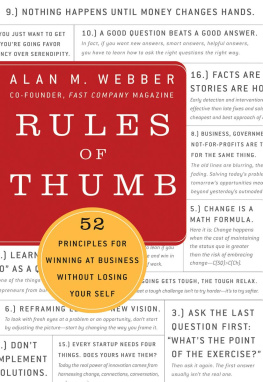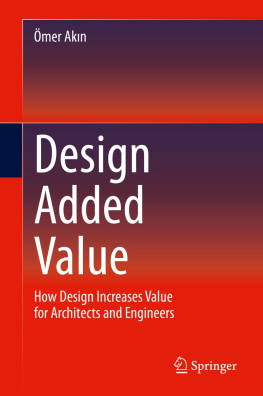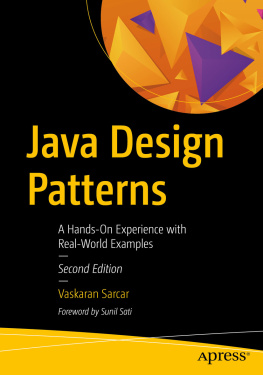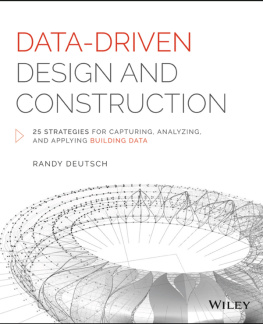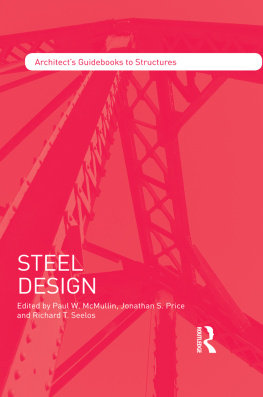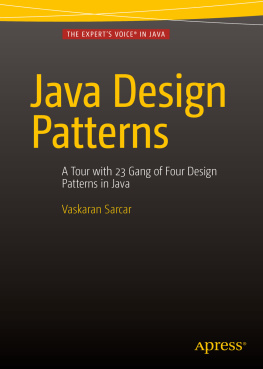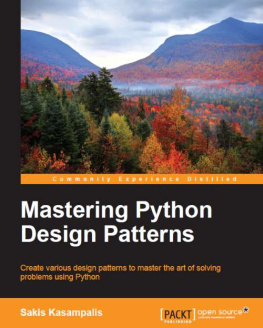
ACKNOWLEDGEMENTS
This book would not have been possible without the love, faith, and patience of Wanda Mouzon. The numerous contributions of Andres Duany, Elizabeth Plater-Zyberk and other members of Duany Plater-Zyberk & Company are greatly appreciated and beyond the scope of the brief description afforded by this space.
This book is enormously better due to the depth of knowledge, breadth of vision and hard work of Nancy Bruning and Calder Loth, who worked many frantic hours on the final edits. The book would have been an embarrassment without them.
This book is a publication of the New Urban Guild, which currently includes the following members (in alphabetical order): Erica Albright, William J. Allison, Julia M. Covington, Keith D. Covington, Christopher S. Engel, Frank G. Greene, Milton Wilfred Grenfell, Susan M. Henderson, Gary William Justiss, Matthew J. Lister, Richard E. McCoy III, R. Eric Moser, the author, Louis Nequette, Nathan R. Norris, Van G. Pond, Jr., and Ken Pursley.

Copyright 2004 by The McGraw-Hill Companies, Inc. All rights reserved. Except as permitted under the United States Copyright Act of 1976, no part of this publication may be reproduced or distributed in any form or by any means, or stored in a database or retrieval system, without the prior written permission of the publisher.
ISBN: 978-0-07-150504-8
MHID: 0-07-150504-0
The material in this eBook also appears in the print version of this title: ISBN: 978-0-07-141632-0, MHID: 0-07-141632-3.
All trademarks are trademarks of their respective owners. Rather than put a trademark symbol after every occurrence of a trademarked name, we use names in an editorial fashion only, and to the benefit of the trademark owner, with no intention of infringement of the trademark. Where such designations appear in this book, they have been printed with initial caps.
McGraw-Hill eBooks are available at special quantity discounts to use as premiums and sales promotions, or for use in corporate training programs. To contact a representative please e-mail us at bulksales@mcgraw-hill.com.
TERMS OF USE
This is a copyrighted work and The McGraw-Hill Companies, Inc. (McGraw-Hill) and its licensors reserve all rights in and to the work. Use of this work is subject to these terms. Except as permitted under the Copyright Act of 1976 and the right to store and retrieve one copy of the work, you may not decompile, disassemble, reverse engineer, reproduce, modify, create derivative works based upon, transmit, distribute, disseminate, sell, publish or sublicense the work or any part of it without McGraw-Hills prior consent. You may use the work for your own noncommercial and personal use; any other use of the work is strictly prohibited. Your right to use the work may be terminated if you fail to comply with these terms.
THE WORK IS PROVIDED AS IS. McGRAW-HILL AND ITS LICENSORS MAKE NO GUARANTEES OR WARRANTIES AS TO THE ACCURACY, ADEQUACY OR COMPLETENESS OF OR RESULTS TO BE OBTAINED FROM USING THE WORK, INCLUDING ANY INFORMATION THAT CAN BE ACCESSED THROUGH THE WORK VIA HYPERLINK OR OTHERWISE, AND EXPRESSLY DISCLAIM ANY WARRANTY, EXPRESS OR IMPLIED, INCLUDING BUT NOT LIMITED TO IMPLIED WARRANTIES OF MERCHANTABILITY OR FITNESS FOR A PARTICULAR PURPOSE. McGraw-Hill and its licensors do not warrant or guarantee that the functions contained in the work will meet your requirements or that its operation will be uninterrupted or error free. Neither McGraw-Hill nor its licensors shall be liable to you or anyone else for any inaccuracy, error or omission, regardless of cause, in the work or for any damages resulting therefrom. McGraw-Hill has no responsibility for the content of any information accessed through the work. Under no circumstances shall McGraw-Hill and/or its licensors be liable for any indirect, incidental, special, punitive, consequential or similar damages that result from the use of or inability to use the work, even if any of them has been advised of the possibility of such damages. This limitation of liability shall apply to any claim or cause whatsoever whether such claim or cause arises in contract, tort or otherwise.
CONTENTS
C HAPTER 1
~
THE STORY OF THE LANGUAGES OF ARCHITECTURE
C HAPTER 2
~
THREE GREAT THEMES OF TRADITIONAL ARCHITECTURE
C HAPTER 3
~
LEXICON
C HAPTER 4
~
THE CLASSICAL ORDERS
C HAPTER 5
~
BASIC PRINCIPLES
C HAPTER 6
~
DETAILS
C HAPTER 7
~
WALLS
C HAPTER 8
~
DOORS AND WINDOWS
C HAPTER 9
~
PORCHES AND BALCONIES
C HAPTER 10
~
E AVES
C HAPTER 11
~
ROOFS
C HAPTER 12
~
DORMERS
C HAPTER 13
~
ATTACHMENTS
C HAPTER 14
~
SITEWORK
FOREWORD
Nothing seems stranger to the layman than the contempt with which certain architects hold other architects.
It is ever thus with tribal warfare.
How would it otherwise be possible that an architect could dislike another having never met, but simply on the basis of a building seen? How is it possible that a style of architecture should be considered to be the only appropriate one for our time? How is this possible in an era when we are meant to be categorically open to diversity?
It seems that architecture and its sects constitute the last of the respectable wars. In the professions modernist schools, suppression of ideas is overtly practiced. At gatherings of the tribal divines and at the oracles, otherwise known as lectures and symposia, there is an irrational blood lust against traditional architecture.
How can such prejudice be sustained? Is it not obvious that we can look with interest upon all styles of buildings, enter them, use them, not be fundamentally harmed and even sometimes be inspired by them? Is it not everywhere observable that both traditional and modernist buildings may perform well or badly, and that this depends on the quality of their design and constructionnot their style?
How amazing that this intolerance can be maintained in the teeth of the most sacrosanct of American scorecards: the marketplace. After all, traditional buildings are preferred by the people by crushing margins. In a society that measures success in numbers (the most votes, the most sold, the richest, the fastest, the tallest) traditional architecture wins by a landslide. It is the way (let us conservatively estimate) that 95% of the million new housing units are built in the U.S. every year. In the presence of this physical fact, how can the modernists dismissal that traditional architecture is not of our time be maintained?
Of course, there is the requisite critical discourse, by which success in the market is ipso facto degraded for being complicit in capitalisma quaint conceit. But why should anyone be concerned about such opinions? After all, these editors, teachers, and critics are on the margin, visible only to themselves. Traditionalist architects, with their million annual buildings, with their success, could easily ignore them.
But they should not.
This book responds with the reason why. Yes, traditional architecture appeals. But the fact is, most of the vast production of traditional building is dismal, ranging from the merely inept to the simply hideous. It is now apparent that many architects, even the well intentioned, lack knowledge of the principles of their tradition. This is a fundamental problem, because traditional architecture is intrinsically a body of knowledge. It is not like the modernist styles where architects define the rules of their own gamea self-determined contest in which each is therefore the indisputable champion: No one beats Eisenman at Eisenmans game; and when anyone else enters the field, he changes the rules. It is quite a different story with traditional architects. There are rules. A person who designs a traditional building is entering a field populated by true world champions including Palladio, Schinkel, Lutyens, and Goodhue. It takes extraordinary courage and temerity to do soor ignorance. And that is, Im afraid, the general situation: an innocent ignorance that leads inevitably, in the case of traditional architecture, to mediocrity.
Next page

